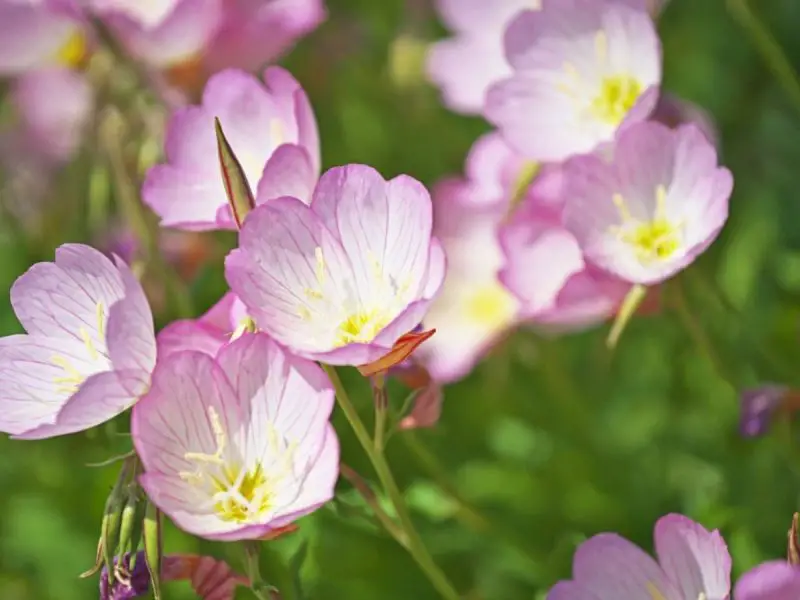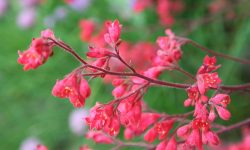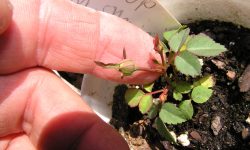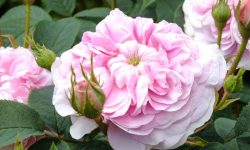Evening Primrose is a captivating perennial that transforms any garden with its golden, radiant blooms. Its unique habit of opening flowers in the evening creates magical, twilight moments that enchant gardeners and attract pollinators like bees and moths. Easy to grow and adaptable to various climates, Evening Primrose adds both beauty and life to flower beds, borders, and natural landscapes, making it a favorite for those seeking vibrant, low-maintenance plants.
Successfully planting Evening Primrose requires attention to its preferred conditions. It thrives in full sunlight with well-draining soil enriched with organic matter. Preparing the garden bed carefully and choosing a location that supports healthy root growth ensures strong, long-lasting plants. Beyond its ornamental charm, Evening Primrose also provides seeds valued for their oil, offering both beauty and functional benefits. With the right care, this plant brings color, fragrance, and ecological value to any garden.
Selecting the Right Site and Soil for Evening Primrose

Choosing the ideal location is crucial for planting Evening Primrose. This plant thrives in full sunlight, which encourages abundant flowering and strong growth. While it can tolerate partial shade, prolonged lack of sun may result in fewer blooms and weaker stems. Selecting a spot that receives at least six hours of sunlight per day ensures optimal performance. Additionally, consider the plant’s mature size and spacing needs to prevent overcrowding, allowing proper air circulation and minimizing the risk of fungal diseases.
Soil quality significantly impacts the health and longevity of Evening Primrose. The plant prefers well-draining soil, as waterlogged conditions can cause root rot. Slightly sandy or loamy soils provide ideal texture, promoting root penetration and nutrient uptake. Preparing the soil involves removing weeds, loosening compacted areas, and incorporating organic matter like compost to enrich fertility. Testing soil pH is also recommended, as Evening Primrose grows best in slightly acidic to neutral conditions, supporting vibrant blooms and resilient growth.
Attention to both site and soil creates the foundation for a thriving garden. Proper placement combined with soil preparation ensures that Evening Primrose establishes quickly and develops a strong root system. Gardeners who invest time in these early steps are rewarded with vigorous plants that bloom consistently and withstand environmental stresses. By understanding the plant’s specific requirements, one can cultivate a colorful, sustainable, and low-maintenance garden that showcases Evening Primrose’s full beauty.
Planting Evening Primrose Seeds or Transplants
Evening Primrose can be propagated from seeds or young transplants, each method offering unique advantages. Seeds are perfect for gardeners who enjoy nurturing plants from their earliest stage and witnessing every phase of growth. Sow seeds directly in prepared soil after the last frost or start indoors for an earlier bloom. Lightly cover the seeds with soil, maintaining consistent moisture until germination. Germination typically occurs within two to three weeks under optimal conditions, and providing warmth and light ensures healthy, vigorous seedlings.
Using transplants provides a faster route to established plants. Young seedlings or nursery-grown plants already possess a developed root system, allowing quicker adaptation to garden conditions. When planting transplants, dig a hole slightly larger than the root ball, position the plant carefully, and backfill with soil. Gently firm the soil around the base and water thoroughly to settle roots. Proper spacing between plants ensures adequate airflow, reducing disease risk and promoting healthy, uniform growth. Protecting young transplants from extreme weather, such as strong sun or frost, further supports their development.
Regardless of propagation method, careful planting practices are essential for long-term success. Monitoring soil moisture, adjusting watering as needed, and ensuring sufficient light exposure encourage strong root formation. Mulching around the base retains moisture, suppresses weeds, and stabilizes soil temperature. By combining thoughtful seed or transplant selection, proper planting technique, and attentive early care, gardeners can cultivate robust Evening Primrose plants. This ensures vibrant blooms that enhance garden aesthetics, attract pollinators, and provide ecological benefits while thriving in a sustainable, low-maintenance garden setting.
Watering and Fertilizing Evening Primrose
Proper Watering Techniques
Evening Primrose requires consistent moisture, especially during establishment and dry spells. Newly planted seeds or transplants need gentle watering to keep the soil evenly moist. Overwatering can lead to root rot, while underwatering may stress the plant and reduce bloom quality. Using a watering can or drip irrigation ensures precise moisture delivery without disturbing the soil or seedlings. Watering in the early morning or late evening minimizes evaporation and allows roots to absorb moisture efficiently. Avoid wetting foliage excessively to reduce the risk of fungal diseases.
As plants mature, they become more drought-tolerant, but regular watering during prolonged dry periods supports vibrant blooms and robust growth. Mulching around the base helps retain soil moisture, reduces evaporation, and stabilizes soil temperature. Observing the soil and adjusting watering frequency based on weather and soil type ensures healthy growth, strong roots, and continuous flowering throughout the growing season. Consistent care and timely watering create a thriving environment, allowing Evening Primrose to flourish while maintaining resilience against heat stress and unpredictable rainfall patterns.
Fertilization for Healthy Growth
Fertilizing Evening Primrose provides essential nutrients for strong stems, lush foliage, and abundant flowers. A balanced, slow-release fertilizer applied at the beginning of the growing season supports root development and overall plant vigor. Over-fertilization should be avoided, as it can promote excessive leaf growth at the expense of blooms. Choosing a fertilizer with a proper balance of nitrogen, phosphorus, and potassium ensures the plant receives what it needs for optimal flowering and long-term health.
Supplemental feeding with compost or organic fertilizers further enriches the soil, improving structure, water retention, and nutrient content. Liquid fertilizers applied every few weeks during peak growth can enhance flowering and maintain plant vigor. Monitoring plant response to feeding allows adjustments, ensuring that nutrients are provided in moderation. By combining proper fertilization with consistent watering and suitable sunlight, gardeners can ensure Evening Primrose develops into vibrant, resilient plants that bloom consistently. This approach supports healthy foliage, robust root systems, and long-lasting flowering, making the garden colorful, lively, and sustainable throughout the season.
Pruning and Deadheading Evening Primrose
Proper Pruning Techniques
Pruning Evening Primrose encourages bushier growth and more abundant flowering. Removing damaged, dead, or weak stems in early spring allows the plant to direct energy toward healthy shoots and new growth. Light trimming throughout the season maintains a neat shape, prevents overcrowding, and improves airflow, which reduces the risk of fungal infections or other diseases. Using clean, sharp pruning tools ensures precise cuts and minimizes stress to the plant, supporting faster recovery and stronger growth.
Strategic pruning also extends the lifespan of the plant by preventing stems from becoming woody and unproductive. Cutting back older growth stimulates fresh shoots and encourages consistent blooming. Observing plant development and pruning at appropriate times guarantees a vibrant and healthy appearance. Combined with regular watering, proper fertilization, and mulching, pruning helps Evening Primrose achieve a full, bushy structure, making it visually appealing while promoting long-term resilience and sustained flowering throughout the growing season.
Deadheading for Continuous Blooms
Deadheading, the practice of removing spent flowers, prolongs the blooming period of Evening Primrose and encourages new bud development. By cutting off faded flowers, the plant redirects energy from seed production to generating more blooms, resulting in a continuous display of vibrant flowers. Deadheading also helps maintain a tidy appearance, preventing the plant from looking scraggly or overgrown.
Regular monitoring is essential, especially during peak flowering months, to remove spent blooms promptly. Use clean pruning shears or gently remove flowers by hand to avoid damaging nearby stems or leaves. Consistent deadheading combined with proper watering, fertilization, and pruning ensures Evening Primrose remains productive and visually striking. Over time, this simple yet effective practice not only maximizes floral display but also supports the plant’s overall health, encouraging strong growth, abundant blooms, and long-lasting vitality in the garden.
Controlling Pests and Diseases in Evening Primrose
Common Pests and How to Manage Them
Evening Primrose can attract a variety of pests, including aphids, caterpillars, and spider mites. These insects feed on leaves, stems, and flowers, causing discoloration, holes, wilting, and sometimes stunted growth. Early detection is critical, as infestations can quickly spread and weaken the plant. Regular monitoring, particularly on the undersides of leaves and near flower buds, allows gardeners to catch problems before they become severe. Observing plant behavior, such as curling leaves or unusual spotting, also helps identify pest presence promptly.
Natural and preventive control methods are effective and eco-friendly. Introducing beneficial insects like ladybugs, lacewings, or predatory mites can naturally reduce pest populations. Applying neem oil or insecticidal soap targets a broader range of pests without harming pollinators. Maintaining strong plant health through proper watering, fertilization, and pruning further increases resistance to infestations. Cultural practices such as crop rotation, removing debris, and spacing plants adequately enhance airflow and reduce pest pressure. Combining these techniques ensures Evening Primrose thrives, producing vibrant flowers while minimizing chemical exposure and maintaining a safe, sustainable garden environment.
Preventing Diseases and Fungal Issues
Evening Primrose is susceptible to fungal diseases such as powdery mildew, leaf spot, and root rot when environmental conditions are unfavorable. Poor air circulation, excessive soil moisture, and overcrowded plantings significantly increase the risk of infections. Choosing well-draining soil, providing adequate spacing between plants, and selecting a location with sufficient sunlight are essential preventative measures. Regularly inspecting plants and promptly removing dead, damaged, or diseased foliage further limits pathogen spread and helps maintain plant health. Early detection and careful attention to plant condition are key to preventing minor issues from developing into severe infections.
In addition to these cultural practices, maintaining consistent garden hygiene is critical. Avoid overhead watering, which can leave leaves wet and encourage fungal growth, and instead water at the base of plants. Applying mulch around the root zone reduces soil splash onto foliage and helps stabilize soil moisture and temperature. Planting disease-resistant varieties and rotating plant locations when possible further minimizes long-term risks. By combining vigilant observation, proactive care, and timely intervention, gardeners can protect Evening Primrose from disease. This ensures the plants remain vigorous, bloom consistently, and continue to enhance garden beauty with healthy, resilient foliage and flowers throughout the growing season.
Propagation and Dividing Evening Primrose
Propagation from Seeds
Evening Primrose can be propagated successfully from seeds, allowing gardeners to grow new plants from scratch and experience the full life cycle. Seeds should be sown in well-prepared, loose soil after the last frost, or started indoors 6–8 weeks earlier for an early bloom. Lightly cover seeds with soil and keep them consistently moist, as overwatering or drought can hinder germination. Seeds typically sprout within two to three weeks under optimal conditions, and providing warmth and adequate light supports strong seedling development.
Starting from seeds gives gardeners control over spacing and the opportunity to select the healthiest seedlings for transplanting. Thin seedlings carefully to prevent overcrowding, ensuring each plant receives sufficient light, nutrients, and airflow, which reduces disease risk. Regular monitoring for pests and diseases during early growth is essential for maintaining healthy plants. Providing consistent care, including appropriate watering, light exposure, and soil management, establishes robust Evening Primrose plants. Over time, these seedlings develop into vigorous, flowering plants, bringing vibrant, golden blooms that enhance garden aesthetics and provide a sustainable, low-maintenance floral display for years to come.
Dividing Established Plants
Dividing mature Evening Primrose is an effective way to propagate new plants while rejuvenating older ones. This method is best performed in early spring or fall, when the plant is not actively flowering. Begin by carefully digging up the entire plant and gently separating it into smaller sections. Each division should have a healthy root system and several shoots to ensure successful establishment. Prepare the new planting site with well-draining soil and plant each division at the same depth it was previously growing.
Division not only produces additional plants for the garden but also encourages vigorous new growth and improves overall flowering. It is particularly useful for controlling overcrowding and maintaining plant health over time. After replanting, water thoroughly and apply mulch to retain soil moisture and regulate temperature. Monitoring the divisions for pests, diseases, and stress during the first few weeks is essential for successful establishment. By combining careful division with proper aftercare, gardeners can expand their Evening Primrose collection, sustain robust, long-lasting plants, and enjoy continuous, vibrant blooms throughout the growing season.
Mulching and Seasonal Care for Evening Primrose
Mulching for Optimal Growth
Applying mulch around Evening Primrose is a key practice to maintain soil health and support consistent growth. Mulch helps retain soil moisture, reducing the need for frequent watering, and keeps the root zone cool during hot summer months. Organic mulches such as shredded bark, compost, or straw gradually break down, enriching the soil with essential nutrients and improving its texture and structure. Mulching also suppresses weed growth, preventing competition for water and nutrients, while contributing to a neat and aesthetically pleasing garden appearance. By stabilizing soil temperature, mulch helps protect roots from extreme heat or unexpected cold snaps, enhancing plant resilience throughout the growing season.
To maximize benefits, mulch should be spread evenly around the base of plants, keeping it slightly away from stems to prevent rot and fungal problems. Replenishing mulch annually or as it decomposes ensures its continued effectiveness. Mulching works best when combined with proper watering, fertilization, and pruning practices. This creates a stable, nutrient-rich environment that promotes strong root systems, vigorous growth, and longer flowering periods. With consistent mulching, Evening Primrose becomes more drought-tolerant, requires less maintenance, and thrives as a robust, colorful addition to the garden year after year.
Seasonal Care and Maintenance
Seasonal care is essential for ensuring Evening Primrose thrives throughout the year and maintains consistent blooms. In early spring, inspect plants for damaged or dead stems caused by winter frost, and prune them to encourage new, healthy growth. Fertilize with a balanced nutrient source to support strong root development and prepare plants for peak flowering. Regular watering during this period ensures seedlings and established plants recover from winter dormancy and develop robust foliage. Observing plant growth patterns allows gardeners to identify potential issues early, such as nutrient deficiencies or pest infestations, and respond promptly.
During summer, monitor for pests and diseases while providing adequate moisture, especially during prolonged dry periods. Deadhead spent blooms to promote continuous flowering and maintain a tidy garden appearance. In fall, trim back older or overgrown stems to prepare plants for dormancy, and apply a fresh layer of mulch to insulate roots against frost. Seasonal adjustments in care, combined with consistent observation, allow Evening Primrose to maintain vibrant blooms, strong stems, and healthy foliage. By following these practices, gardeners ensure long-term plant resilience, continuous visual appeal, and a thriving, low-maintenance garden that flourishes year after year.
Companion Planting and Garden Design with Evening Primrose
Companion Planting with Evening Primrose
Evening Primrose pairs well with a variety of other flowering plants, creating visually appealing and ecologically balanced garden spaces. Its bright yellow blooms complement plants with contrasting colors, such as purple salvia, blue catmint, or red coneflowers. Companion planting not only enhances the aesthetic appeal but also supports pollinators, attracting bees, butterflies, and other beneficial insects. Selecting companion plants that have similar sunlight and water requirements ensures harmonious growth without stressing any species.
In addition to aesthetic and ecological benefits, companion planting can improve overall plant health. Some neighboring plants may help deter pests or reduce disease incidence, while others can provide partial shade during extreme heat, benefiting the Evening Primrose. Proper spacing between companion plants is crucial to allow adequate airflow and prevent overcrowding. By thoughtfully combining Evening Primrose with compatible species, gardeners can create vibrant, diverse, and resilient gardens that flourish throughout the growing season, offering both beauty and ecological function.
Garden Design and Placement Tips
Strategic placement of Evening Primrose within the garden maximizes both visual impact and plant health. Planting along borders, pathways, or in mixed flower beds creates layers of color and texture, with the bright yellow blooms adding cheerful focal points. Considering the plant’s mature height and spread is essential to prevent overcrowding smaller or more delicate species. Integrating Evening Primrose with taller or more structured plants adds depth and dimension to garden designs, while careful spacing improves airflow, reducing the risk of pests and diseases. Selecting companion plants with similar water and sunlight needs ensures a harmonious and thriving garden environment.
Gardeners should also account for seasonal changes when planning layouts. Evening Primrose grows best in full sun to partial shade and prefers well-draining soil. Positioning plants where they receive gentle morning sunlight and protection from intense afternoon heat supports prolonged blooming and prevents stress. Incorporating elements like rock gardens, borders, or ornamental grasses can highlight the plant’s vibrant color. Thoughtful placement, combined with attention to sunlight, soil, and water needs, allows Evening Primrose to thrive while contributing to a dynamic, colorful, and sustainable landscape that offers continuous visual appeal and ecological benefits year-round.
Harvesting and Using Evening Primrose
Harvesting Evening Primrose Flowers
Harvesting Evening Primrose flowers at the right time ensures maximum beauty, freshness, and utility. The flowers bloom predominantly in the evening and typically last through the night, making late afternoon or early evening the ideal harvesting window. Use clean, sharp scissors or pruning shears to gently snip blooms, taking care not to damage surrounding stems or foliage. Regularly removing spent flowers encourages continuous blooming, as the plant channels energy into producing new buds rather than maintaining old blossoms. Observing the plant’s flowering rhythm and environmental conditions helps gardeners determine the best timing for harvest.
Collected flowers can be used immediately for various decorative purposes. They enhance bouquets, floral arrangements, and garden displays with vibrant color and delicate form. Handling blooms carefully preserves the soft petals and bright yellow hue, ensuring they remain visually appealing. Additionally, flowers can be pressed, dried, or incorporated into natural crafts for long-term enjoyment. By following proper harvesting techniques and maintaining garden hygiene, gardeners not only prolong the life and beauty of Evening Primrose blooms but also encourage healthy growth, making the plant a continual source of color and interest throughout the season.
Using Evening Primrose for Health and Beauty
Evening Primrose is valued not only for its ornamental beauty but also for its potential health and wellness benefits. The seeds are particularly rich in gamma-linolenic acid (GLA), an essential fatty acid that supports skin health, reduces inflammation, and may help with hormonal balance. Gardeners can harvest mature seeds, dry them, and use them in supplements, or press the seeds to extract oil for culinary, cosmetic, or therapeutic applications. This makes Evening Primrose a versatile plant, offering both aesthetic and functional benefits in the garden.
Leaves and petals, while less commonly used, also have applications in natural remedies and teas. Fresh petals can be added to salads or infused in water for mild herbal drinks, while dried petals can be used in topical preparations for soothing skin irritations. Proper harvesting, drying, and storage are essential to preserve the plant’s beneficial compounds. By combining careful cultivation, mindful harvesting, and appropriate usage, gardeners can enjoy both the vibrant beauty of Evening Primrose flowers and the wellness advantages offered by seeds and other plant parts, making it a valuable addition to any garden focused on health and sustainability.
Troubleshooting Common Issues with Evening Primrose
Pest Infestations
Evening Primrose can attract a variety of pests, including aphids, caterpillars, and spider mites, which feed on foliage, stems, and flowers. Aphids often cluster on new growth, causing leaves to curl and leaving sticky residue that can promote mold growth. Caterpillars chew holes in leaves and flowers, reducing the plant’s aesthetic appeal and bloom quality. Spider mites thrive in dry, dusty conditions and can cause yellowing or stippling of leaves. Early detection is crucial; gardeners should inspect leaves, stems, and flower buds weekly to catch infestations before they spread extensively. Removing pests manually, such as picking off caterpillars or washing leaves with a gentle stream of water, can manage minor problems effectively.
For more persistent infestations, natural and eco-friendly treatments are highly effective. Spraying neem oil or insecticidal soap controls a range of pests without harming pollinators. Introducing beneficial insects, like ladybugs, lacewings, or predatory mites, helps maintain natural pest balance. Supporting overall plant health through proper watering, fertilization, and pruning strengthens the plant, making it less susceptible to pest attacks. By combining careful monitoring, cultural practices, and environmentally friendly treatments, gardeners can ensure that Evening Primrose remains vibrant, healthy, and productive throughout the growing season, while minimizing chemical use and promoting a balanced garden ecosystem.
Fungal Diseases
Evening Primrose is susceptible to several fungal infections, including powdery mildew, leaf spot, and root rot, especially when growing conditions are humid or overcrowded. Powdery mildew appears as a white, powdery coating on leaves and stems, while leaf spot manifests as dark, circular lesions that can weaken the foliage. Root rot occurs in poorly drained soils and can lead to wilting, yellowing, and eventual plant death. Early detection is critical; gardeners should regularly inspect plants for any signs of fungal damage and remove affected foliage promptly to prevent the spread of pathogens.
Preventative measures and environmental management are key to controlling fungal diseases. Ensuring proper spacing between plants improves air circulation, reducing humidity around foliage. Avoid overhead watering, which can promote fungal growth, and apply mulch to limit soil splash onto leaves. Choosing disease-resistant varieties and rotating planting locations can further reduce risk. Combining proactive cultural practices, careful monitoring, and timely interventions allows gardeners to maintain healthy Evening Primrose plants that flourish with vibrant blooms while minimizing losses due to fungal infections. Consistent care ensures long-term plant health and resilience.
Nutrient Deficiencies
Yellowing leaves, stunted growth, or poor flowering in Evening Primrose often indicate nutrient deficiencies, which can hinder overall plant health. A lack of nitrogen may cause pale, weak foliage, while insufficient phosphorus can result in poor root development and limited blooms. Potassium deficiency reduces the plant’s stress tolerance, making it more susceptible to pests, diseases, and environmental stress. Recognizing the signs of nutrient imbalance early allows gardeners to take corrective action before the plant’s growth and flowering are severely affected.
Correcting deficiencies involves amending the soil with organic compost or a balanced fertilizer tailored to the specific nutrient lacking. Regular soil testing helps monitor nutrient levels and informs proper supplementation. Additionally, consistent watering ensures that nutrients are absorbed effectively by the roots. Maintaining overall garden hygiene, such as removing dead leaves and controlling weeds, reduces competition for nutrients. By providing the right balance of essential elements, gardeners can promote vigorous growth, strong root systems, and abundant flowering, ensuring that Evening Primrose thrives and maintains its vibrant, cheerful appearance throughout the growing season.
Environmental Stress
Evening Primrose can experience stress due to environmental factors such as extreme heat, prolonged drought, excessive moisture, or insufficient sunlight. Overexposure to harsh sunlight can cause leaf scorch and wilting, while prolonged water shortages may reduce flowering and weaken the overall plant structure. Sudden temperature drops or unexpected frost can damage young shoots, slow growth, and, in severe cases, kill the plant. Recognizing environmental stress early is critical to prevent lasting damage and maintain healthy, vibrant plants.
Gardeners can mitigate stress by implementing strategic care practices. Providing consistent watering during dry periods, applying mulch to retain soil moisture, and positioning plants in locations with partial shade during extreme heat helps protect the plants. Additionally, choosing planting sites with well-draining soil and adequate sunlight ensures optimal growth conditions. Combining these measures with routine observation allows gardeners to adjust care promptly, ensuring Evening Primrose remains resilient. Healthy plants under controlled environmental conditions continue to produce vibrant blooms, withstand adverse weather, and maintain strong growth, contributing to a thriving, colorful, and sustainable garden.
FAQ About Planting Evening Primrose
What is the best time to plant Evening Primrose?
The optimal time to plant Evening Primrose is in early spring after the last frost or in late fall in mild climates. This allows seeds or transplants to establish strong roots before extreme heat or cold. Proper timing ensures vigorous growth, early flowering, and long-lasting blooms in the garden.
How often should I water Evening Primrose?
Evening Primrose prefers consistently moist soil, especially during establishment. Water young plants gently to avoid displacing seeds or seedlings. Mature plants are somewhat drought-tolerant but benefit from regular watering during dry spells. Adjust watering based on soil type, temperature, and rainfall to maintain healthy growth and vibrant blooms.
How can I prevent pests on Evening Primrose?
Monitor plants regularly for aphids, caterpillars, and spider mites. Remove pests manually or use natural treatments like neem oil or insecticidal soap. Introducing beneficial insects such as ladybugs can help. Maintaining plant health through proper watering, fertilization, and pruning increases resilience and minimizes pest-related damage effectively.
What soil conditions does Evening Primrose need?
Evening Primrose thrives in well-draining, fertile soil with moderate organic matter. Avoid heavy clay or overly compacted soil that retains water, as this can cause root rot. Slightly sandy or loamy soil with good drainage ensures strong root development, healthy growth, and abundant flowering throughout the growing season.
Can I use Evening Primrose for health purposes?
Yes, seeds are rich in gamma-linolenic acid (GLA), supporting skin health, reducing inflammation, and promoting hormonal balance. Seeds can be pressed for oil or used in supplements, while petals may be used in teas. Proper harvesting and storage preserve nutrients, allowing gardeners to enjoy both ornamental and wellness benefits.
Conclusion
Evening Primrose is a versatile and resilient plant that adds beauty, color, and functional benefits to any garden. With proper planting, watering, and care, it thrives in diverse conditions while offering vibrant blooms and potential health uses. By understanding propagation, pest and disease management, and environmental needs, gardeners can ensure long-lasting, flourishing plants. Integrating Evening Primrose thoughtfully into garden designs enhances both aesthetics and sustainability. Regular maintenance, mindful harvesting, and attention to plant health maximize its ornamental and practical value. Ultimately, Evening Primrose rewards dedicated care with stunning visual appeal and year-round garden vitality.






